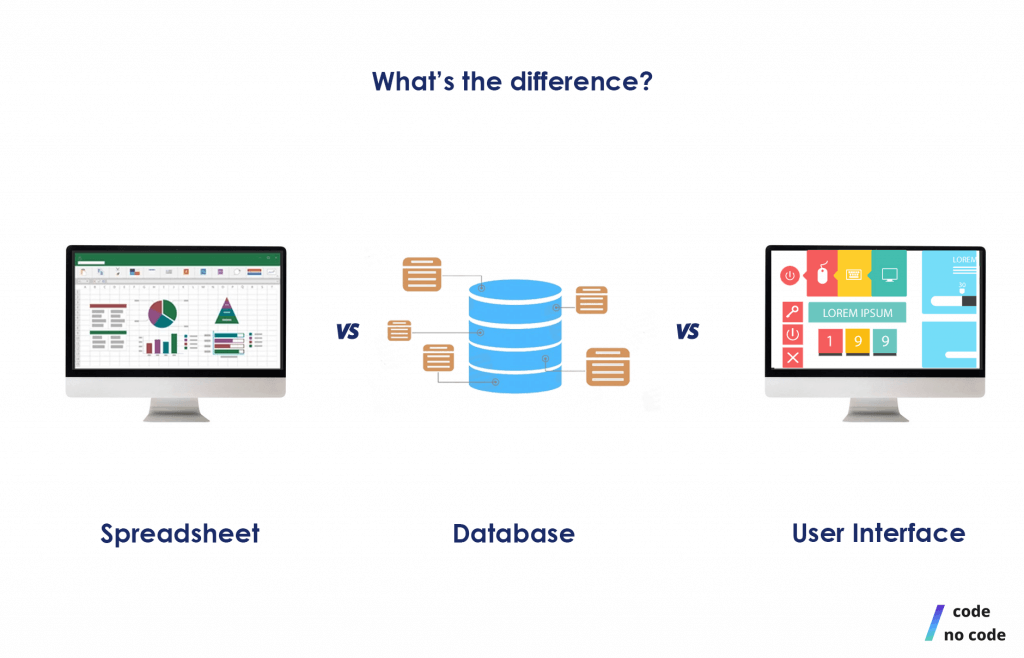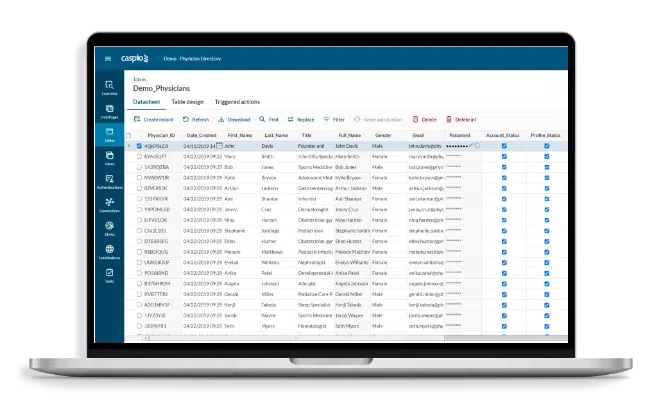No-Code Operating Systems for Open Platform Data Source Development: Save Time and Resources
No-Code Operating Systems for Open Platform Data Source Development: Save Time and Resources
Blog Article
A Comprehensive Overview to Applying Scalable Databases Without the Need for Coding Knowledge
In the modern landscape of data monitoring, the capability to implement scalable databases without coding proficiency is ending up being increasingly necessary for organizations of all sizes. This overview aims to light up the process, focusing on easy to use tools and user-friendly interfaces that demystify data source arrangement. By examining key features, reliable approaches for execution, and ideal methods for continuous administration, we will address how also non-technical customers can confidently navigate this complex surface. What are the critical components that can genuinely equip these individuals to leverage scalable databases properly? The solutions might redefine your strategy to information monitoring.
Understanding Scalable Data Sources
In the realm of modern-day data monitoring, scalable databases have actually emerged as a crucial remedy for organizations looking for to manage boosting quantities of information successfully. These databases are designed to accommodate growth by permitting the seamless enhancement of resources, whether with straight scaling (adding extra devices) or vertical scaling (upgrading existing equipments) This adaptability is crucial in today's fast-paced electronic landscape, where information is generated at an extraordinary rate.
Scalable databases commonly utilize distributed styles, which enable data to be spread out throughout multiple nodes. This circulation not just enhances performance but likewise gives redundancy, guaranteeing information accessibility even in the occasion of equipment failings. Scalability can be a crucial aspect for numerous applications, including ecommerce systems, social networks networks, and large information analytics, where user demand can fluctuate dramatically.
Furthermore, scalable databases typically feature durable information uniformity versions that balance performance and dependability. Organizations needs to consider their details needs, such as read and write speeds, information stability, and mistake resistance when selecting a scalable database solution. Ultimately, understanding the underlying principles of scalable data sources is essential for businesses intending to grow in a significantly data-driven globe.
Trick Attributes to Seek
When reviewing scalable databases, numerous key functions are vital to ensuring ideal performance and integrity. Most importantly, consider the design of the database. A dispersed style can enhance scalability by permitting information to be saved throughout multiple nodes, assisting in seamless data accessibility and handling as demand rises.
One more crucial feature is information partitioning, which allows efficient monitoring of big datasets by dividing them right into smaller, extra workable pieces (no-code). This technique not only boosts performance yet likewise simplifies resource allocation
Furthermore, look for durable replication capacities. This function ensures data redundancy and high availability, decreasing downtime throughout maintenance or unanticipated failings.
Performance surveillance devices are likewise necessary, as they supply real-time insights into system wellness and operational performance, enabling timely modifications to preserve optimal efficiency.

User-Friendly Database Tools
Simpleness is a crucial component in the layout of easy to use database devices, as it improves access for customers with varying levels of technical knowledge. no-code. These you could try these out tools focus on user-friendly user interfaces, allowing individuals to create, manage, and question data sources without needing substantial shows knowledge
Trick attributes normally consist of drag-and-drop functionality, aesthetic data modeling, and pre-built layouts that streamline the arrangement process. Such tools frequently supply directed tutorials or onboarding procedures that help with individual involvement and minimize the knowing curve. Additionally, seamless assimilation with prominent information sources and solutions guarantees that individuals can conveniently import and export data, even more simplifying procedures.

Moreover, robust assistance web link and community resources, such as online forums and documentation, boost the customer experience by offering help when required. Generally, straightforward database tools empower companies to harness the power of scalable data sources, making information monitoring easily accessible to every person involved.
Step-by-Step Implementation Guide
Exactly how can companies effectively apply scalable data sources to fulfill their expanding data needs? The procedure begins with determining specific data needs, including the quantity, variety, and speed of information that will be refined. Next, organizations need to assess user-friendly database devices that offer scalability attributes, such as cloud-based remedies or handled data source services.
As soon as the best tool is selected, the next action entails setting up the database environment. This consists of establishing up circumstances, specifying user approvals, and establishing information structures that straighten with business objectives. Organizations should then migrate existing information right into the brand-new system, guaranteeing information honesty and marginal disruption to operations.
Post-migration, carrying out thorough testing is vital; this consists of efficiency testing under various tons problems to make sure the system can take care of future development - no-code. In addition, it is essential to train staff on the database management interface to assist in smooth usage
Best Practices for Management
Effective administration of scalable data sources requires a calculated strategy that focuses on recurring monitoring and optimization. To attain this, organizations must implement robust tracking devices that supply real-time understandings right into data source efficiency metrics, such as query action times, source use, and transaction throughput. Routinely examining these metrics can help identify bottlenecks and areas for renovation.

Regular backups and catastrophe recovery plans are necessary to protect information honesty and schedule. Establishing a routine for evaluating these back-ups will certainly guarantee a trustworthy recuperation process in situation of an unexpected failure.
Moreover, performance adjusting need to be a continual process. Adjusting indexing methods, optimizing questions, and scaling resourcesâEUR" whether up and down or horizontallyâEUR" will aid preserve optimal efficiency as usage needs progress.
Finally, fostering a society of knowledge sharing amongst employee will certainly enable continual understanding and adjustment, ensuring that the administration of scalable data sources remains reliable and effective with time.
Final Thought
Finally, the implementation of scalable databases can be effectively accomplished without coding expertise with the use of user-friendly devices and instinctive user interfaces. By sticking to the outlined strategies for setup, information movement, and efficiency testing, people can navigate the complexities of database administration effortlessly. Stressing ideal techniques for ongoing maintenance and partnership additional boosts the ability to handle scalable data sources efficiently in a rapidly advancing data-driven setting.
In the contemporary landscape of data management, the ability to execute scalable databases without coding experience is becoming increasingly necessary for companies of all sizes.In the realm of contemporary data management, scalable data sources have actually arised as a crucial solution for companies seeking to handle raising quantities of details successfully.Moreover, scalable data sources typically feature robust information uniformity designs that balance performance and reliability.Just how can companies successfully carry out scalable databases to meet their growing data demands? Next off, companies must examine straightforward data source devices that use scalability features, such as cloud-based solutions or managed data source services.
Report this page